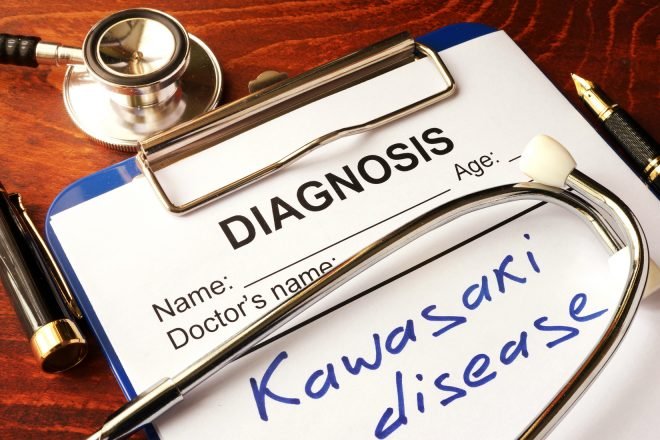Advertisment
Combination initial therapy for Kawasaki disease reduces blood vessel complications

Article written by Bruce Sylvester
Adjuvant corticosteroid therapy, along with standard intravenous (IV) immunoglobulin treatment, of children with Kawasaki disease who are at an elevated risk of blood vessel complications has led to more efficacious initial treatment for the condition and helped prevent such complications.
Researchers reported these findings on Aug. 19, 2020 in the Journal of the American Heart Association.
“Early diagnosis and prompt treatment are important for children with Kawasaki disease to prevent the development of cardiac complications,” said lead author Ryusuke Ae, M.D., Ph.D., assistant professor in the department of public health at the Center for Community Medicine at Jichi Medical University in Shimotsuke, Japan.
“As the blood vessel wall becomes enlarged, the inside of the vessel may narrow. Blood clots may form, blocking the artery and potentially leading to a heart attack. Children who have such vessel wall complications may require long-term follow-up after the onset of Kawasaki disease,” added Ae.
Standard treatment for Kawasaki disease is IV immunoglobulin plus aspirin. For about 17% of patients initial IV immunoglobulin treatment is not effective, and this elevates the risk of cardiac complications. Recently, clinicians have added corticosteroids to initial treatment, but this off-label treatment regimen has been thoroughly studied.
In this retrospective study, the investigators identified 1,593 Kawasaki disease patients under the age of 18 who were first treated with standard IV immunoglobulin with aspirin. They compared the clinical outcomes for these subjects to a control group of 1,593 Kawasaki disease patients treated with corticosteroids in combination with the standard therapy.
They matched subjects for age, sex and time to initial treatment for after symptoms appeared.
They reported that initial combination treatment with immunoglobulin, aspirin and corticosteroids reduced the need by 35% for a second course of therapy.
Initial combination therapy cut by 47% the risk of coronary artery abnormalities.
“It was surprising to see the dramatic results of our analysis. Clinicians should consider initial combination treatment with multiple-dose corticosteroids for high-risk Kawasaki disease patients,” Ae said.





